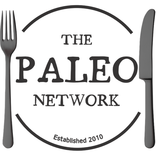Have you seen who’s behind the (not so) Healthy Star Ratings system?
I saw a TV commercial recently for Uncle Toby’s Oat sachets and the main focus of the advert was how amazingly healthy they are. Apparently these Oats achieve a “4 healthy star rating” – and the higher the star rating, the healthier the product. So they say. Whilst I don’t want to pick on oats specifically, as I think they’re probably one of the not-as-bad-as-the-other-cereals out there, it really highlights how dangerously misleading these Healthy Star Ratings are. Initially I thought the Healthy Rating System was just based on old, outdated (incorrect) advice, but when I saw who was involved in it's creation, it took a far more sinister turn.

What are Healthy Star Ratings?
This is an Australian initiative, and it’s jointly funded by the Australian, state and territory governments, and developed in partnership with industry and public health and consumer groups.
I took a further look into these groups, who have jointly developed these ratings, and they include the Australian Beverages Council, and the Australian Food and Grocery Council.
And just who makes up these bodies?
Members of the Australian Beverages Council include:
- Coca-Cola Amatil Pty Ltd
- Coca-Cola South Pacific
- Heinz Australia P/L
- PepsiCo Australia Holdings Pty Ltd
- Red Bull Australia Pty Ltd
- Tropico Fruits Pty Ltd
Among many others… (Surely we're not going to ever see health ratings on Red Bull?)
The Australian Food and Grocery Council has on its board:
- Clive Stiff who is Chairman and Chief Executive Officer for Unilever Australia & NZ – their brands include Bertolli, Streets Ice Cream and my favourite Flora pro-activ
- Trevor Clayton who is Chief Executive Officer for Nestle Australia Ltd
- Andrew Towle who is Managing Director for Kellogg (Australia) Pty Ltd
- Darren O’Brien who is Managing Director for Mondelez Foods Australia (better known as Kraft Foods and Cadbury)
- Michael Ryan who is General Manager of Mars Chocolate, and
- Peter West, Managing Director of Lion Dairy & Drinks
So the very companies who produce packaged, processed convenience food have very helpfully come up with a healthy star rating system? And we’re supposed to use this to tell us what is healthy food we should be eating lots of?
How to get a high star rating?
No surprisingly the star system is based on the old beliefs that whole grains are good for us, and fat to be avoided. Products receiving above 4 stars will include whole-grain foods, low-fat milk and reduced fat cheese, and extra lite (urgh I hate that word, theirs, not mine) spreads.
And how to get a low rating?
Products getting below 1 star include those that are full fat, regular fat yoghurt, high saturated fat cheese, salted butter, coconut oil (yes, they expressly list coconut oil on the less healthy foods list) and of course, untrimmed meats. So we can pretty much assume if it’s a natural, unprocessed, paleo food, it won’t get a high healthy star rating.
So I’ve come up with a new system to help you use the star rating system to identify healthy foods:
If it has a healthy star rating, avoid it tweet this quote
What’s your opinion on the Healthy Star Rating system?


